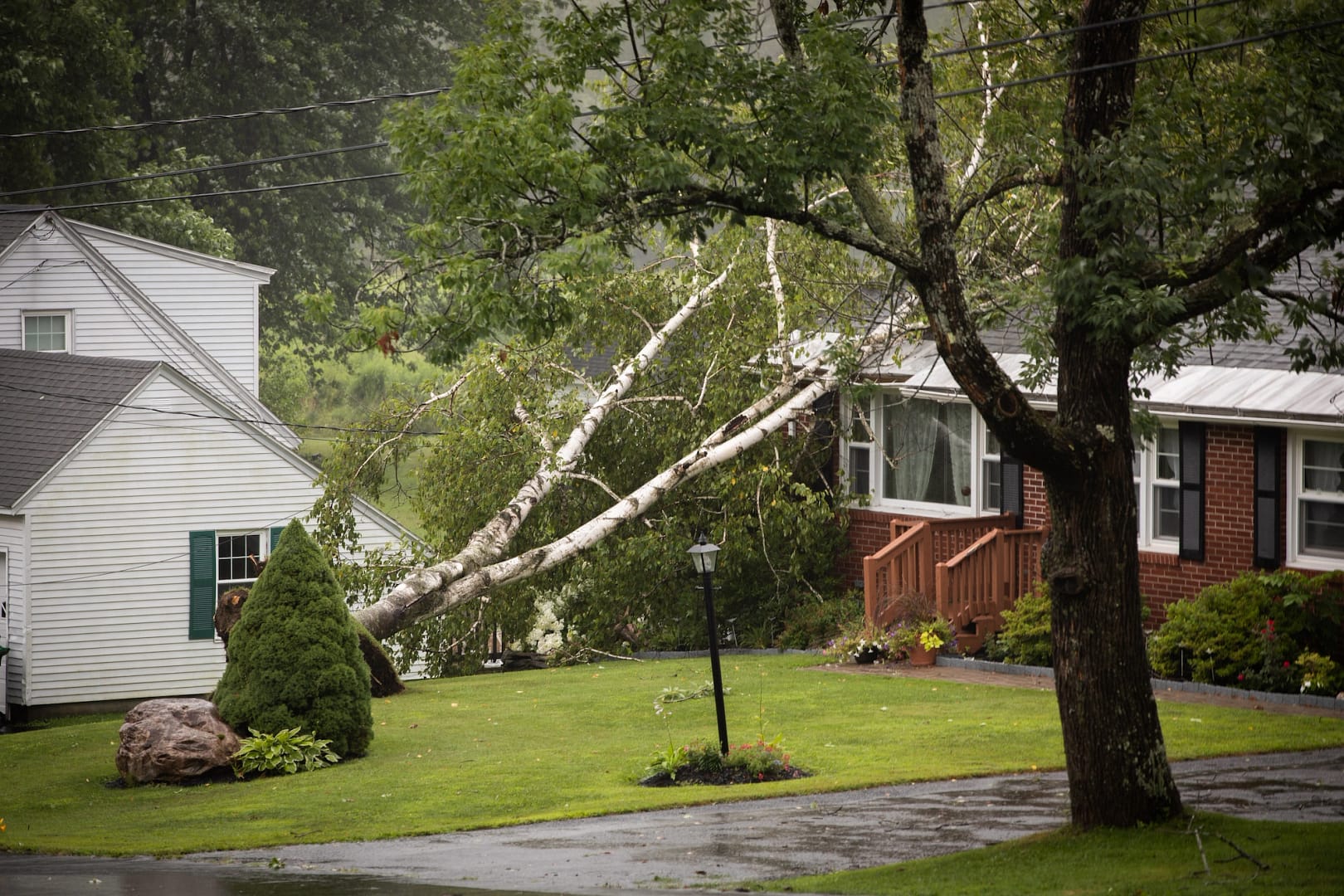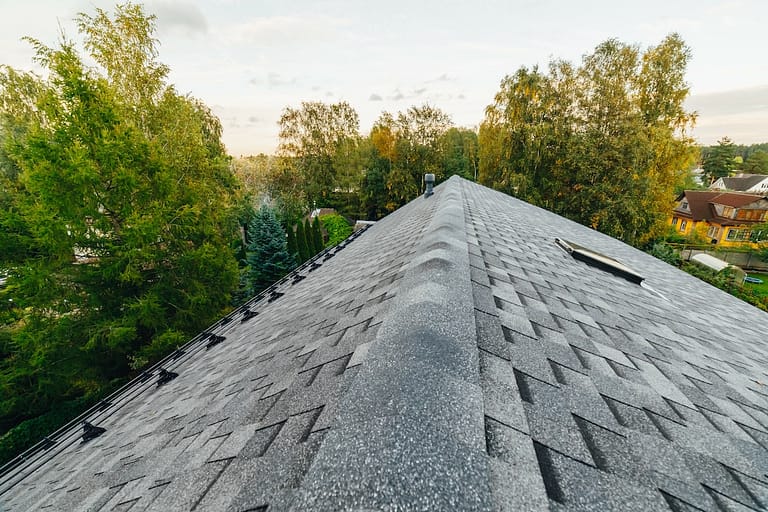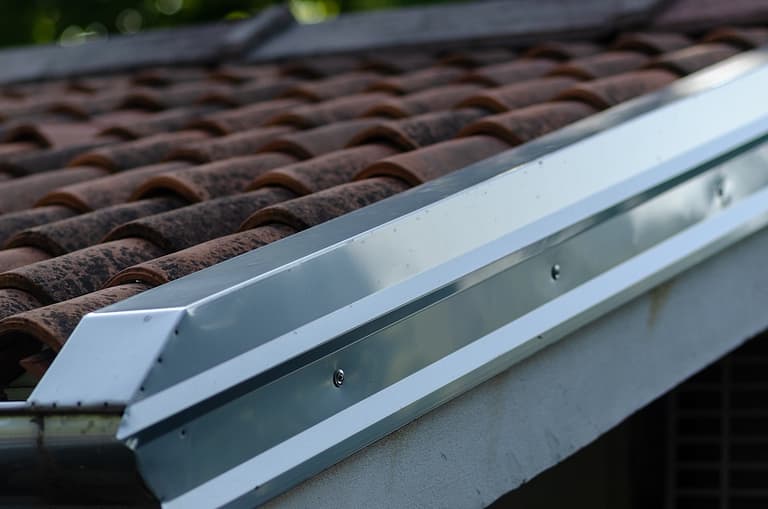Storms can wreak havoc on your home, especially on your roof. From heavy rain and wind to hail and snow, these natural phenomena can leave behind a trail of destruction. Recognizing signs of storm damage is crucial for safeguarding your property and ensuring the longevity of your roof.
In our roofer’s guide, we’ll explore:
- The various types of storm damage
- How to identify them
- Methods for repair
- Associated costs
- Whether filing an insurance claim is necessary
Types of Storm Damage
There’s a wide variety of weather conditions that can cause damage to your home’s exterior. Here’s a few of them, and what the roof damage might look like.
Wind Damage:
- Shingles lifted or torn off
- Bent or missing flashing
- Loose or detached gutters and downspouts
- Debris scattered on the roof
Hail Damage:
- Dents or pockmarks on shingles
- Granule loss on shingles
- Cracks or fractures in roofing materials
- Damaged vents or skylights
Water Damage:
- Leaks or water stains on ceilings or walls
- Damp insulation or attic spaces
- Mold or mildew growth
- Warped or rotted roof decking
Snow and Ice Damage:
- Ice dams forming along roof edges
- Excessive weight causing structural strain
- Damaged gutters or eaves from ice buildup
- Cracked or broken shingles due to freeze-thaw cycles
How to Spot Storm Damage on Your Roof
Do you suspect that you have a damage to your roof? Here are some of the things to look for.
Visual Inspection:
Check for missing or damaged shingles. Look for granule loss or dents caused by hail.
Next, examine flashing and seals around vents, chimneys, and skylights. Inspect gutters and downspouts for debris or damage.
Interior Examination:
Look for water stains or discoloration on ceilings and walls. Check for dampness or moisture in attic spaces.
Inspect insulation for signs of water infiltration or mold growth. Listen for dripping sounds during rainfall.
How to Repair Storm Damage
When you’re looking to repair your roof, you need to follow these steps for a functioning, safe roof.
DIY Repairs:
- Replace missing or damaged shingles using roofing cement and nails.
- Repair small leaks with roofing sealant or flashing tape.
- Clear debris from gutters and downspouts to prevent further damage.
Professional Repairs:
- Hire a licensed roofing contractor for extensive damage or repairs requiring specialized equipment.
- Consider professional inspection and maintenance services to identify hidden damage and ensure long-term durability.
Cost to Repair Storm Damage
Repair costs can vary greatly depending on the extent of the damage.
Minor Repairs:
DIY repairs for minor damage can cost between $100 to $400, depending on materials and tools required.
Professional repairs for small leaks or shingle replacements may range from $200 to $800.
Moderate Damage:
Repairing moderate storm damage, such as extensive shingle replacement or fixing structural issues, can cost between $500 to $2,000.
Hiring a professional contractor for medium-scale repairs may range from $1,000 to $5,000, depending on the extent of damage and materials used.
Severe Damage:
Major storm damage, including roof replacement or significant structural repairs, can cost upwards of $5,000 to $15,000 or more.
Costs vary based on the size of the roof, accessibility, materials chosen, and labor rates in your area.
Should You File an Insurance Claim for Roof Damage?
Roof storm damage can be expensive to repair, but your insurance company can help!
- Assessing Damage: Document the extent of the damage with photographs and written descriptions. Obtain multiple estimates from reputable roofing contractors to determine repair costs.
- Review Your Policy: Understand your insurance coverage, including deductibles, limitations, and exclusions related to storm damage. Consult with your insurance agent to clarify any questions or concerns about filing a claim.
- Consideration Factors: Evaluate the cost of repairs compared to your deductible. Assess the likelihood of future storms and potential damage. Determine if filing a claim could result in increased premiums or policy cancellation.
- Decision Making: If the cost of repairs exceeds your deductible and the damage is significant, filing a claim may be warranted. However, for minor damage or repairs within your deductible threshold, it may be more economical to cover the expenses out of pocket to avoid potential premium hikes.
Your Storm Damage Professionals
Conclusion: Storm damage can pose significant challenges for homeowners, particularly when it affects the integrity of their roofs. Recognizing the signs of damage, promptly addressing repairs, and considering insurance options are essential steps in protecting your property and ensuring its longevity. By staying informed and proactive, you can weather the storm and preserve the safety and value of your home for years to come.
Contact G Cannon Roofing today to identify storm damage signs with a professional roofer.







